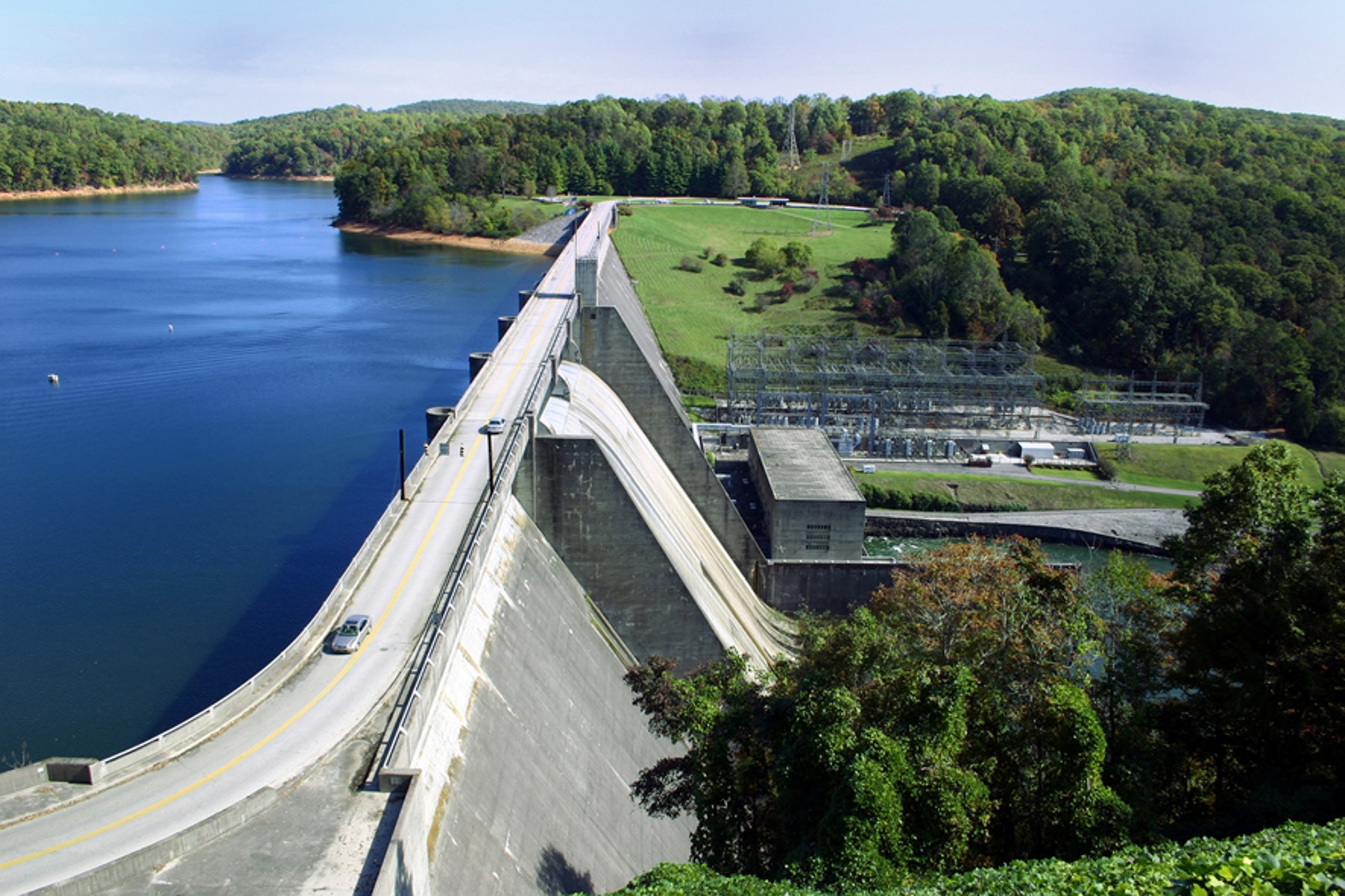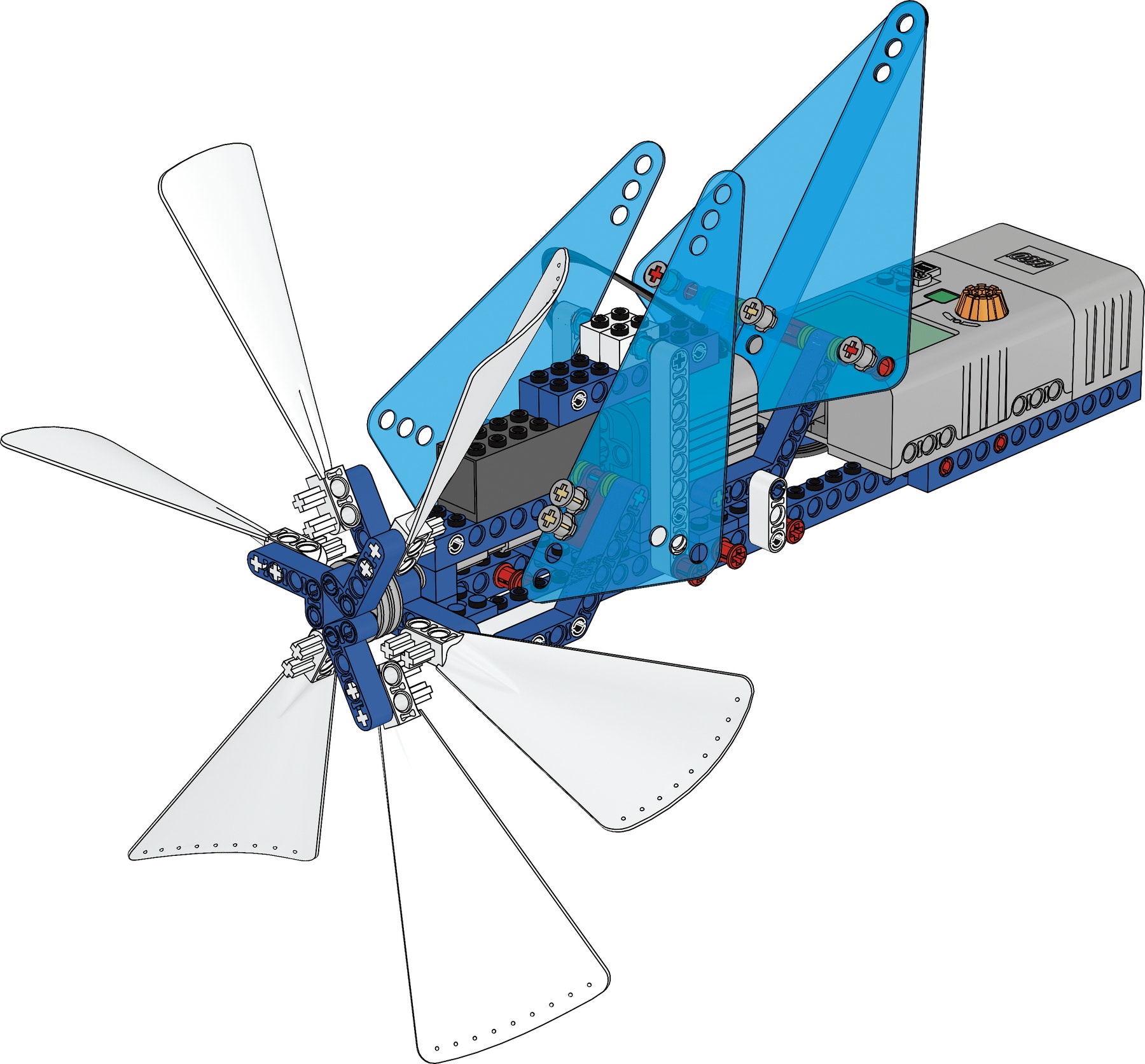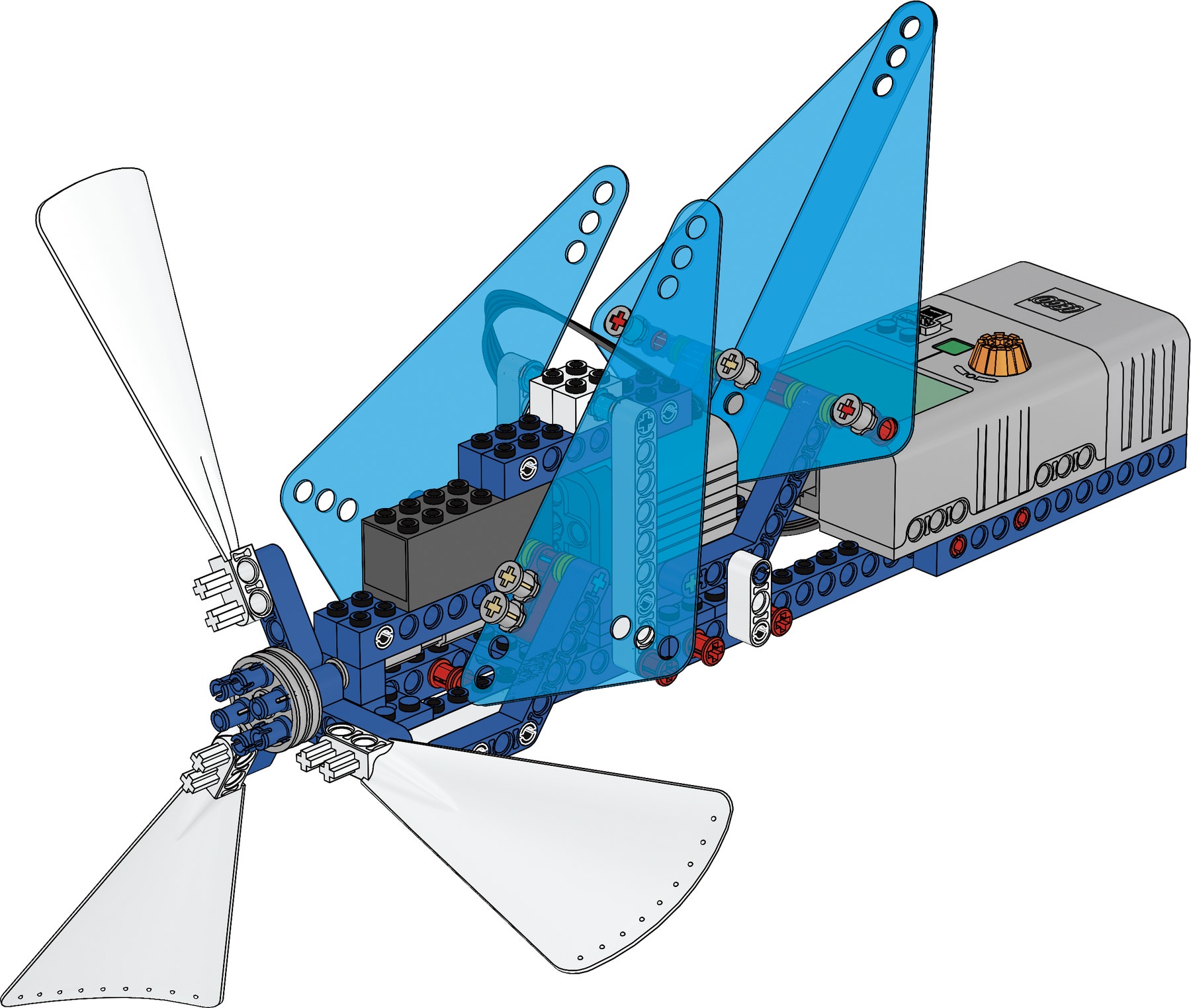Hydro Turbine
Explore transfer, transformation, storage and dissipation of energy with reference to conversion of the kinetic energy of moving water to electrical energy

Connect
(5-10 Minutes)
Hydro turbines have the ability to convert the kinetic energy of moving water into electrical energy. They are used to generate electricity for large utility grids and in isolated locations for small communities or for single homes.
Now build the Hydro Turbine and investigate its ability to generate power.

Construct
(20-25 Minutes)
Build the Hydro Turbine
(Building Instruction booklet 4A and 4B, to page 20, step 30).
Test the model’s functionality. Loosening bushings can reduce friction. Connect the plugs properly by pressing them firmly together. Make sure to return the joules reading to zero before testing.

Test Setting
Position the Hydro Turbine at an appropriate distance from the tap.
Choose a suitable, constant water pressure that shows at least 2.0 V on the Energy Meter’s input reading.
To find the optimal set up, look at the Energy Meter readings as an indicator of which position generates the most power.
When the pressure point is found, mark the tap handles position with a piece of adhesive tape.
Have paper or cloth towels close at hand to dry LEGO elements.
Students can gently turn the blades to get the Hydro Turbine started if needed.

Warning! This may be dangerous!
Warning!
Make sure that the Energy Meter and the E-Motor are protected as best you can from water spray, they are not waterproof. Additional protection from a plastic bag or cling wrap might be appropriate.
Contemplate
(20-25 minutes)
Accumulating joules
The task requires students to investigate how many joules (J) the Hydro Turbine can accumulate after a time period of 120 seconds.

First, have students predict how many joules the Hydro Turbine will accumulate after a time period of 120 seconds at 20 second intervals.
Then, have students graph their prediction in a system of coordinates of how many joules the Hydro Turbine will accumulate after a time period of 120 seconds at 20 second intervals.
Next, have students investigate how many joules they can accumulate after a period of 120 seconds. Have them read and record their findings at 20 second intervals and have them graph their findings in the same system of coordinates as their prediction.
Before taking any readings, make sure students let the Hydro Turbine run for a while to pick up speed.
Findings will vary depending on the water power device available, students will see that the amount of joules accumulated is proportional to the water pressure and time period used.
Hint
The Energy Meter display must show more than 2.0 V on the input reading.
Have students reflect on their investigations by asking questions such as:
• Which factors did you base your predictions on?
• Can you explain your findings?
• Can you identify a pattern or trend in the findings?
The amount of joules accumulated is proportional to the water pressure and time period.
• How did you make sure that your findings were scientifically valid?
Students need to investigate several times to make sure findings are consistent, that the Hydro Turbine turns either clockwise or counter-clockwise each time, that the water hits the blades in the same spot in every investigation and that the Hydro Turbine always stays in the same position and at the same distance from the water supply.
Hint
Reset the Energy Meter before each investigation.
Continue
(25-30 Minutes)
Changing the number of blades
(Building Instruction booklet 4A and 4B, to page 22 step 2).
The task requires students to investigate how many joules (J) the Hydro Turbine can accumulate after a time period of 120 seconds, with only three blades attached.
Hint
Reset the Energy Meter before each investigation and remember to keep the same water pressure as before.

First, have students predict how many joules the Hydro Turbine will accumulate after a time period of 120 seconds at 20 second intervals.
Then, have students graph their prediction in a system of coordinates of how many joules the Hydro Turbine will accumulate after a time period of 120 seconds at 20 second intervals.
Next, have students investigate how many joules they can accumulate after a period of 120 seconds. Have them read and record their findings at 20 second intervals and have them graph their findings in the same system of coordinates as their prediction.
Before taking any readings, make sure students let the Hydro Turbine run for a while to pick up speed.
Findings will vary depending on the water power device available, students will see that the amount of joules accumulated is proportional to the water pressure and time period used. Students will also see that a lesser amount of joules are accumulated when the Hydro Turbine only has three blades attached.
Identifying Variables
Have students identify and write down at least three variables, explaining clearly how these affect the Hydro Turbine’s efficiency.
Some factors could include the effects of changing the diameter of the Hydro Turbine, the area and number of blades used, the angle and position at which the blades catch the flow of water, and the condition of the water flow.
Did you know?
The power available from any water power device depends on three variables: the height that the water supply is above the turbine, also called the head, the flow rate and gravity.
Teacher Support
Students will explore the concepts of:
Scientific investigation
Conversion and storage of energy
Investigating and evaluating variables
Informal and formal measuring of distance/time/speed/work
Reading, predicting, and interpreting data
9686 Simple & Powered Machines Set (two students per set recommended)
9688 Renewable Energy Add-on Set
Adhesive tape
Enough water pressure to read at least 2.0 V on the Energy Meter input reading
Graph paper
Stopwatch or timer
Paper or cloth towels to dry LEGO elements
NGSS
Disciplinary Core Ideas: Physical Science
MS-PS3 Energy
Crosscutting Concepts
Cause and effect: Mechanism and explanation
Scale, proportion, and quantity
Systems and system models
Energy and matter: Flows, cycles, and conservation
Structure and Function
Stability and change
Science and Engineering Practices
Asking questions and Defining Problems
Developing and using models
Planning and carrying out investigations
Analyzing and interpreting data
Constructing explanations and designing solutions
Obtaining, evaluating, and communicating information
Common Core State Standards English Language Arts
SL 6-8.1 / SL 6-8.4 / RST 6-8.3 / RST 6-8.4 / RST 6-8.7 / WHST 6-8.1 / WHST 6-8.2 / WHST 6-8.4
Student Material
Share with:
 Google Classroom
Google Classroom



